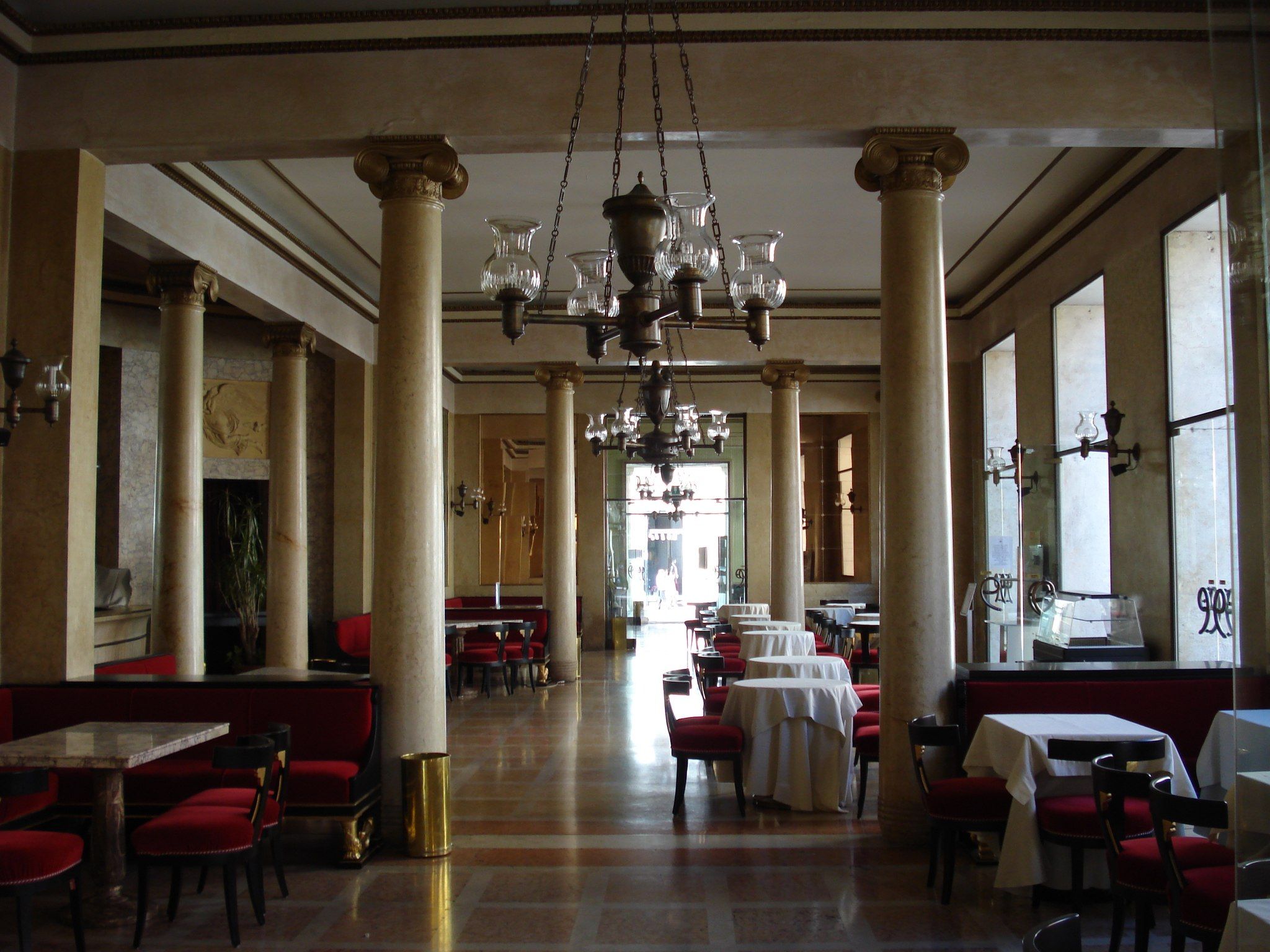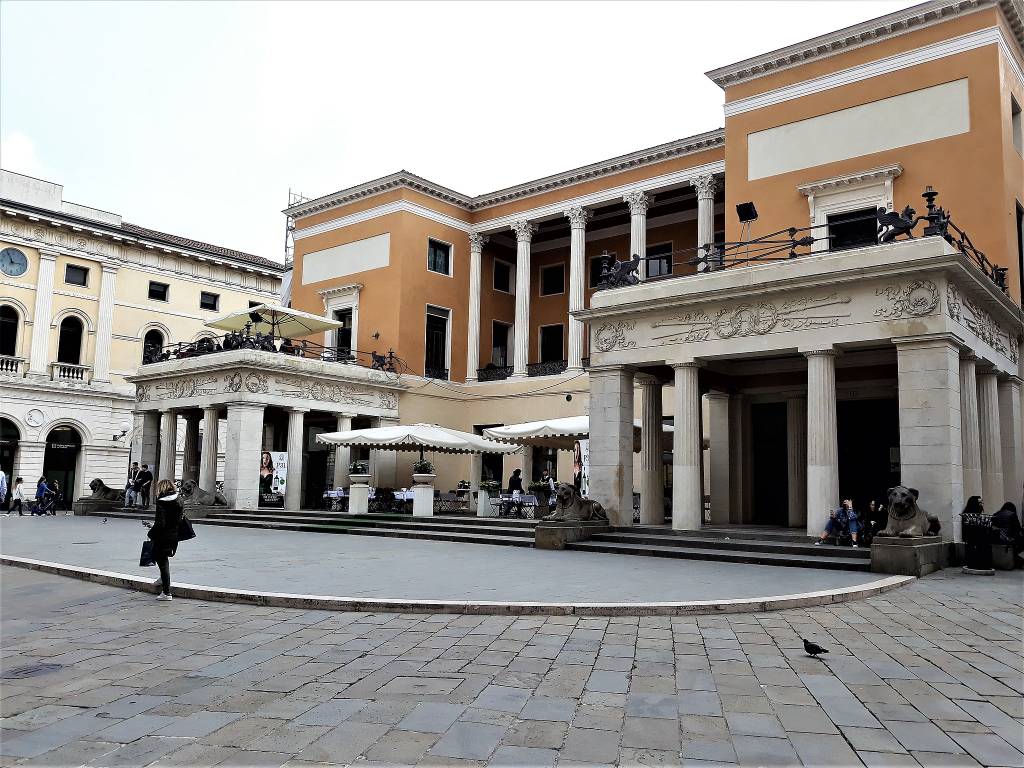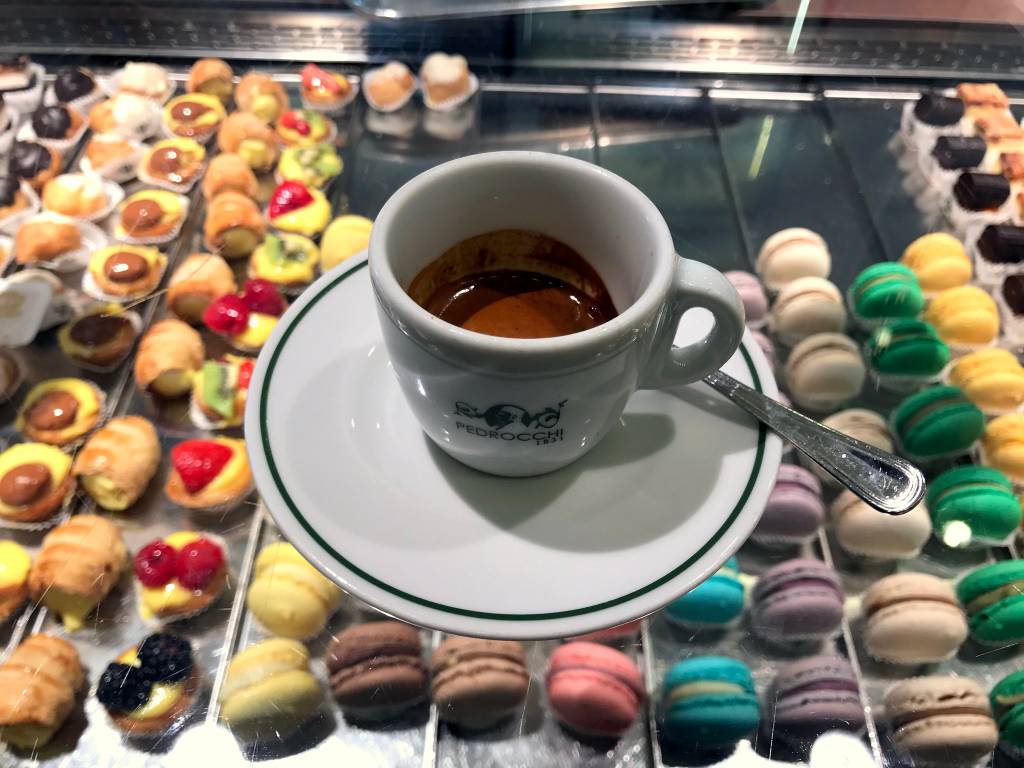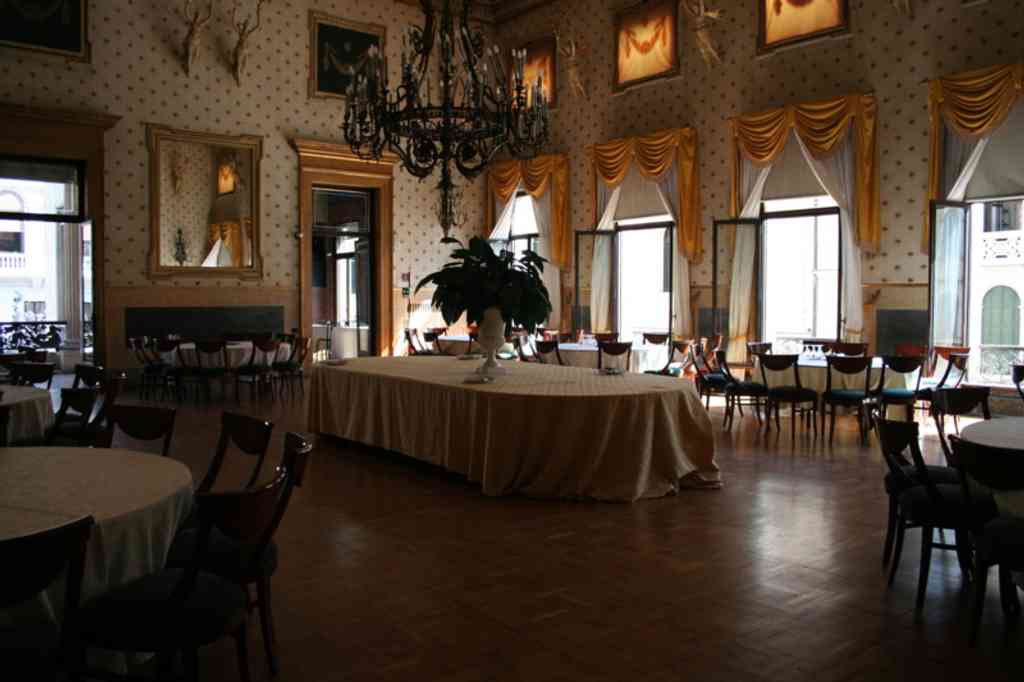Caffè Pedrocchi
Caffè Pedrocchi, one of the symbols of modern Padua, a café with historical prominence recognized for its coffee and good food

Caffè Pedrocchi is an elegant and refined café located in Piazza Cavour, in the heart of the city. From its inauguration in 1831 until 1916, it was always open, day and night. Therefore, it got the reputation of the “café without doors”.
The story of Caffè Pedrocchi begins with Francesco Pedrocchi of Bergamo, who in 1772 opened a small coffee shop in Padua's city centre. Its location was near the University, town hall, markets, and the Noli Square (now Piazza Garibaldi), a transit area of the city, from where coaches left to nearby cities and where it was possible to hire post riders called noli. This new drink quickly became popular, and by the beginning of the 19th century, nobles and bourgeois, intellectuals and commoners mingled in the many cafés of Padua. Many years later, after having inherited the property from his father, Antonio Pedrocchi, now a famous coffee maker, decides to expand the premises and build a proper factory to roast, store, and blend coffee.
The project was entrusted to Venetian architect and engineer Giuseppe Jappelli who designed an eclectic neoclassical building that resembled a gallery. Later, he enlarged the structure by annexing the Pedrocchino, a new pastry shop with a neo-Gothic layout, on the southern side, thus creating an interesting contrast of styles between the two facades. The neoclassical facade is characterised by two Doric arcades, guarded by four lions, sculpted by the Roman sculptor Giuseppe Petrelli, on which all the Paduan children climbed at least once.
The interior is structured on two floors: on the ground floor, there is the café bar, while the first floor, called Piano Nobile, includes a series of rooms dedicated to entertainment, dancing, and parties. It is also hosting the Museum of the Risorgimento and Contemporary Age, a perfect choice considering the history of the building within the revolutionary wave of 1848.
Soon after the opening of the once considered “the most beautiful café on Earth”, it became a privileged meeting point for locals and a welcoming place for travellers and merchants. It was one of the most famous historical and literary cafés of the 19th century in Italy, “a place where ideas were born” for students, artists, writers, and patriots.
On February 8, 1848, the building was the scene of the clashes that led the young patriots of the city to rebel against Austrian rule. This revolt was the premise of the independence war in Italy and its subsequent unification. The event is celebrated every year with the Feriae Matricularum, the historic festival of the University students.
It could be said that the ground floor pays tribute to the Italian flag with its three rooms: green, white, and red.
The interior of the Caffè Pedrocchi
The ground floor is divided into various rooms that take their name from the upholstery colour: the Red Room, the Green Room, and the White Room.
The two outermost rooms, the Green Room to the north and the White Room to the south, famous for keeping the mark of an Austrian bullet fired during the riots of 1848, can be used freely and without charge. There is no service in these rooms. But in the Green Room, a longstanding tradition is kept alive: free water and American coffee are available for university students, as well as newspapers and wireless Internet access. The Green Room, or Sala Verde, was intended for those who wanted to sit down and read the newspapers with no obligation to purchase. Therefore, it was the favourite haunt of penniless students from the nearby university. The Italian expression of essere al verde (being green), meaning "being broke”, has its origin in this place.
The Red Room is the heart of Caffè Pedrocchi, set up with elegant Ionic columns. A piano often used for musical accompaniment also available for customers, and various tables are placed in front of the large ornate marble counter with bronze decorations – the original 19th century counter built according to Jappelli’s design. Right above the counter is a clock as old as the counter still running, there to remind its visitors that Caffè Pedrocchi was the cafe that never closed, the café without doors.
Specialities to try
The strong point of Pedrocchi is the coffee-based preparations (after all, Antonio Pedrocchi had made his fortune by managing a coffee roaster). Still, the bar offers all kinds of hot and cold drinks, non-alcoholic, an incredible selection of wines made up of more than 500 labels and 150 champagne selections, and accompanying snacks, making the place an excellent solution for breakfast, coffee break, or an aperitif.
Despite the exclusive appearance, the excellent level of proposals and impeccable service, the cafeteria prices are similar to other bars in the centre.
Specialities to try are:
the House coffee - a coffee flavoured with cold mint cream and a sprinkling of cocoa (price € 3.00)
the Stendhal Zabaione - a cup of zabaglione accompanied by tender biscuits, which Stendhal praised in his masterpiece “The Charterhouse of Parma” (price € 6.00)
The ground floor also houses the Octagonal Room, a modern pastry shop opened in 2014 and curated by the master pastry chef Gianni Zaghetto of the Pasticceria Racca. Offers a rich selection of mignon, ice cream glasses, chocolate, and sweet and savoury snacks, for an aperitif or lunch break. The service is at the counter, but the room has several tables where it is possible to sit freely.
Noble floor
In the loggia on the right, there is the large staircase leading to the Noble Floor, where various rooms follow one after the other, referencing to the styles of the past: the Etruscan Room, which in the past was used as a cloakroom, the Greek Room, dedicated to games, the Renaissance Room, the Roman Room, the Egyptian Room, and the Dance Hall, dedicated to the composer Gioacchino Rossini.
Paintings by various artists adorn the different rooms with appropriate subjects: Roman views by Ippolito Caffi in the Roman room, Plato and Diogenes’ rooster in the Greek room, statues, sphinxes, and cinerary urns in the Egyptian room.
The Noble Floor is used for parties or special events and is available to customers who want to organise banquets or graduation parties.
Museum of the Risorgimento
Museum of the Risorgimento and Contemporary Age, situated on the first floor, documents the Paduan history of the last century and a half, from the fall of the Venetian Republic to the promulgation of the Italian Constitution, passing through the Austrian and Napoleonic domination until the unification of Veneto with the Kingdom of Italy.
The Museum exhibits artefacts and documents donated by private citizens or provided by other Institutes, such as the Italian War History Museum in Rovereto.
The Museum of the Risorgimento is open from Tuesday to Sunday, from 9.30 to 12.30 and from 15.30 to 18.00, except Christmas, New Year's Eve, and May 1st. The ticket costs € 4.00 and includes access to the Pedrocchi Noble Floor.
We welcome all contributions, no matter how small. Even a spelling correction is greatly appreciated.
All submissions are reviewed before being published.
Continue to changelog-

© 'Caffè Pedrocchi' by Ettorre is licensed under CC BY-SA 4.0 Attribution copied to clipboard Failed copying attribution to clipboard -

© 'Espresso at Caffè Pedrocchi' by Bex.Walton is licensed under CC BY 4.0 Attribution copied to clipboard Failed copying attribution to clipboard -

© 'La Sala Rossa del Pedrocchi' by Orric is licensed under CC BY-SA 4.0 Attribution copied to clipboard Failed copying attribution to clipboard -

We welcome all contributions.
All submissions are reviewed before being published.
We welcome all contributions, no matter how small. Even a spelling correction is greatly appreciated.
All submissions are reviewed before being published.
Continue to changelogWe welcome all contributions, no matter how small. Even a spelling correction is greatly appreciated.
All submissions are reviewed before being published.
Continue to changelogWe welcome all contributions, no matter how small. Even a spelling correction is greatly appreciated.
All submissions are reviewed before being published.
Continue to changelogCategory
Cost
-
52 m
Palazzo Moroni, the usual name for the Municipal Buildings, is a complex of buildings in the city’s heart that house the offices of the Municipality of Padua.
-
95 m
The Palazzo del Bo in Padua is a fifteenth-century complex and the historic seat of the University of Padua, one of the oldest universities in the world.
-
136 m
Piazza della Frutta, once called Piazza del Peronio, has been the commercial heart of Padua for centuries.
-
147 m
One of the oldest churches in the city, also popularly known as the Church of Santa Rita, it is historically a place of faith and meditation.
-
The Palazzo della Ragione, built in the Middle Ages as the seat of the city courts, still hosts on the ground floor one of the oldest European markets




